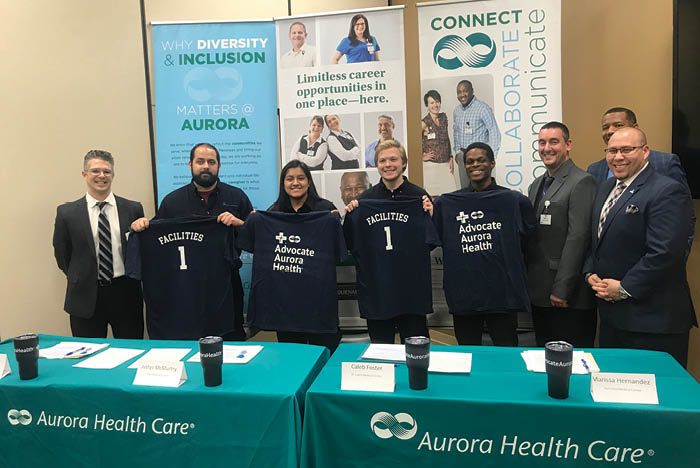Apprenticeship program develops employee pipeline

St. Luke’s Medical Center’s current apprenticeship class is set to complete the program in the second quarter of 2022.
Image courtesy of Advocate Aurora Health
Advocate Aurora Health (AAH) St. Luke’s Medical Center in Milwaukee is celebrating the third year of its health care facilities apprenticeship program and preparing three of its four apprentices to graduate this spring. Upon completing the 5,200 hours of training required by the state-sanctioned program, the individuals will receive a journeyperson’s card.
As Cory Majszak, MSOL, CHFM, CHOP, director of operations for facilities at St. Luke’s Medical Center, says, “Now our workforce is hitting the cusp of retirement, so our strength is turning into a liability.”
It’s a liability hitting the entire industry, and AAH capitalized on that fact by securing help from other local health systems in building its apprentice program.
“Our biggest fear was to build an employee with skills that no one else would want,” Majszak says.
So AAH connected with peers through the Wisconsin Healthcare Engineering Association. Through this collaboration, Majszak aimed to build a program that other health systems would recognize, making the opportunity more enticing to potential recruits. While Majszak acknowledges it may seem counterintuitive to create candidates for competitors, he says, “The burden, and opportunity, is on us to retain them.”
AAH also secured assistance from the Milwaukee Area Technical College (MATC) and former American Society for Health Care Engineering President Dean Pufahl, CHFM, CHC, in transforming an early AAH intern program into something more comprehensive that aligned with requirements set by the Wisconsin Department of Workforce Development. With this assistance, AAH created a curriculum that tied specific steps and hour milestones to compensation increases and documented the hours put into building key skill sets.
Individuals were recruited through MATC, word-of-mouth outreach and AAH’s original facilities internship. Apprentices train alongside AAH team members to become well-rounded jacks of all trades. However, current facilities employees went through their own training sessions, learning how to serve as mentors.
“We saw team members take a sense of pride in showing what they know. They had a chance to leave their legacy by passing on that tribal knowledge,” Majszak says.
Once these individuals transition to journeypersons for AAH, they will have responsibility for training the next generation of apprentices in a sustainable recruitment cycle.




